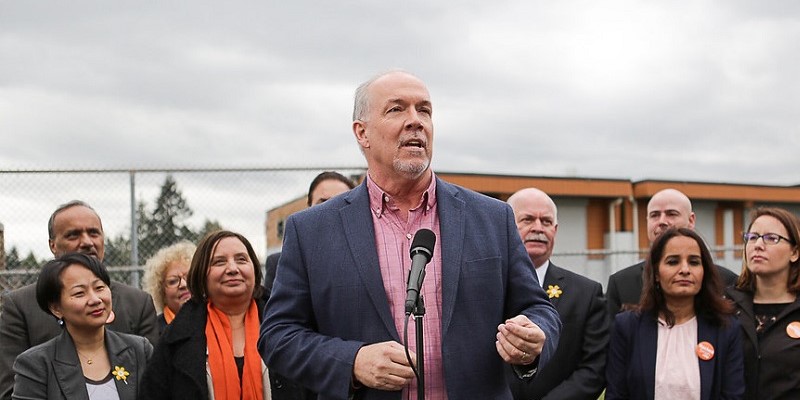B.C. Budget adds debt while making the province less competitive

Today the British Columbia government tabled its 2020 budget. Unfortunately, the budget did little to rein in spending and debt while making the province less competitive by rasing taxes on entrepreneurs, professionals and businessowners.
B.C. recorded its seventh consecutive balanced operating budget, with further balanced budgets planned over the next three years (from 2020/21 to 2022/23). This is one of the bright spots in the budget, as some provinces east of the Rockies continue to face large and persistent deficits.
However, despite projecting small operating surpluses from 2020/21 to 2022/23, net debt in the province is expected to grow by $14.2 billion over the period covered by the budget. B.C. can balance its budget and still accumulate debt because the province separates annual spending (the operating budget) from long-term spending on items such as new schools and highways (the capital budget).
Provincial net debt (as a share of the economy) is also set to increase after a few years of decline, from 14.5 per cent in 2019/20 to 17.1 per cent by 2022/23.
This accumulation of debt carries substantial risk because the government is spending more than it collects in revenues during a period of economic growth. Fiscal flexibility in B.C. would be hampered if the economy falls into a recession or interest rates begin to rise.
Spending growth is expected to slow in the years to come, as spending increases will be held to 2.6 per cent annually over the next three years, which is below the rate of population-plus-inflation growth (3.4 per cent).
The government plans to increase program spending over the budget plan, from $56.1 billion in 2019/20 to $60.7 billion in 2022/23. And spending will increase annually in three major spending areas—4.1 per cent for health care, 1.7 per cent for education and 4.3 per cent for social services. Health care will continue to consume a larger share of overall program spending, growing from 41.0 per cent in 2019/20 to 42.7 per cent in 2022/23.
Finally, on taxes, the budget retroactively announced a new top personal income tax (PIT) bracket for taxable incomes over $220,000 effective January 1, 2020. The province’s top marginal PIT rate will increase from 16.8 per cent to 20.5 per cent. In addition, the budget revealed that all carbonated beverages containing sugar will be taxed at a rate of 7 per cent after eliminating exemptions from the provincial sales tax for these beverages.
Prior to these tax changes, the province already had one of the highest top combined federal and provincial personal income tax rates in North America, while competing for skilled workers and investment with neighbouring states such as Alaska and Washington that don’t have any state-level personal income taxes. By raising the tax rate on entrepreneurs, professionals and businessowners, tax competitiveness will become an even bigger problem for B.C. as high tax rates will limit the ability of the province to attract and retain investment and skilled workers critical to a growing economy.
Unfortunately, the budget also did nothing to reduce business taxes. B.C. is becoming less competitive with other jurisdictions as neighbouring Alberta continues to gradually reduce its corporate income tax rate to 8 per cent. Despite this reality, the B.C. government chose to maintain its current tax rate of 12 per cent, risking a loss of investment and jobs that may gravitate elsewhere.
In its 2020 provincial budget, the B.C. government largely failed to tackle the province’s biggest fiscal challenges. Budget 2020 did almost nothing to better control government spending or reduce debt, and actually hinders the ability of the province’s economy to improve.

